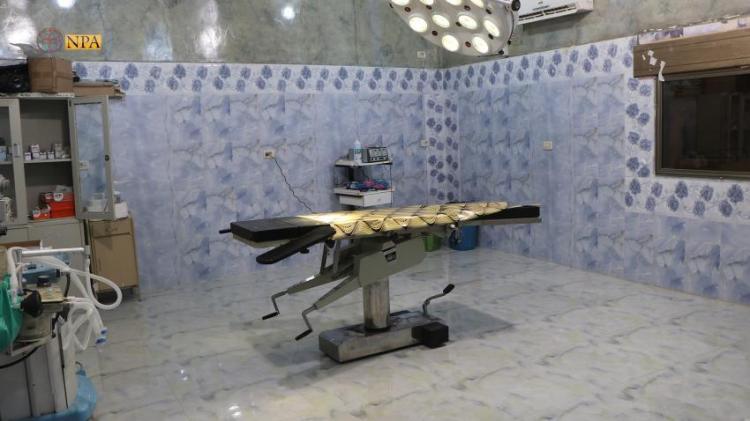Deir ez-Zor – North-Press Agency
Jindar Abdulqadir
Like other civilians in the town of Hajin, 110 km southeastern Deir ez-Zor, doctors were subjected to restrictions and surveillance by the Islamic State group (ISIS), imposing, during their control period on the area, laws to determine the specialization of doctors and what they may do.
Gynecologists and obstetricians have had the greatest amount of such restrictions, due to the laws imposed by the terrorist group, preventing them from practicing their profession of diagnosing sick women in their areas of control.
North-Press had a tour in the town and observed the health situation after seven months in which Syrian Democratic Forces had expelled ISIS group militants in mid-December 2018, after fierce battles that led to extensive damage to the infrastructure in the town.
Before the crisis
Dr. Mohammed Abd Al-Kaisoun, a 56-year-old resident of the village of Bebrus in Hajin area, explained that the health and medical situation in Hajin before the Syrian crisis was very advanced, and reached a stage similar to the rest of the Syrian cities.
He indicated that there were many hospitals and dispensaries equipped with various modern medical devices such as axial tomography, magnetic resonance, radiography imaging, and laparoscopic operations, as he said, “What was available in the capital Damascus was closer to what is available here in our town and the neighboring areas”.
While doctors of Hajin had left their town at sporadic times, beginning with the end of Syrian government’s control of the area, which followed by the control of the opposition armed groups, and then Hayat Tahrir al-Sham (Previously known as Al-Nusra Front), after that the last remained doctors had left during the control of the Islamic State.
Harassments
Dr.Al Kaisoun equipped a private hospital on his own expense before the ISIS took control of the town, but after the control of the latter, they did not allow him to open the hospital because he was a gynecologist and the hospital is for gynecological diseases, also because the terrorist group desired to appoint a health Ameer to supervise the hospital.
”I refused at first, but I had no choice other than closing the hospital, which was equipped with various modern medical equipment, at a cost of about SYP 200 million, about 334,000 dollars”, he said while noting that the equipment was stolen and the hospital was damaged by the fierce battles between the Syrian Democratic forces and ISIS militants.
Dr. Al Kaisoun added, “During the control of the Islamic State, the Hajin hospital was handed over to me, but I imposed some conditions, including that there should be no presence for the group’s militants roaming inside the hospital,” he said, adding that the hospital provided services to Hajin’s residents and others in the countryside of the town with a staff of about 90 nurses and health workers from Hajin and its countryside.
Post-ISIS
Al Kaisoun pointed out that all of the doctors who “fled and displaced” because of different military groups’ actions, did not return, even after the expulsion of ISIS militants by the Syrian Democratic Forces.
The doctor’s clinic was subjected to destruction and robbery of all modern equipment that he previously hid and buried in some locations.
“After the expulsion of ISIS militants, I returned to my hometown and my hospital was completely different from the one I left as I was displaced,” says the doctor, indicating that he has already repaired some parts of it for about SYP 13 million, about 22,000 dollars.
While currently, about 20 health workers are working in the private hospital, including a nurse, a midwife, a surgical assist and an anesthetist, they provide women’s surgical services, surgery, and general operations, as well as a children’s ward.
The town of Hajin was the Islamic State’s fortress in its last stronghold in the eastern countryside of Deir ez-Zor before the Global Coalition backed Syrian Democratic Forces managed to take control over the area.

